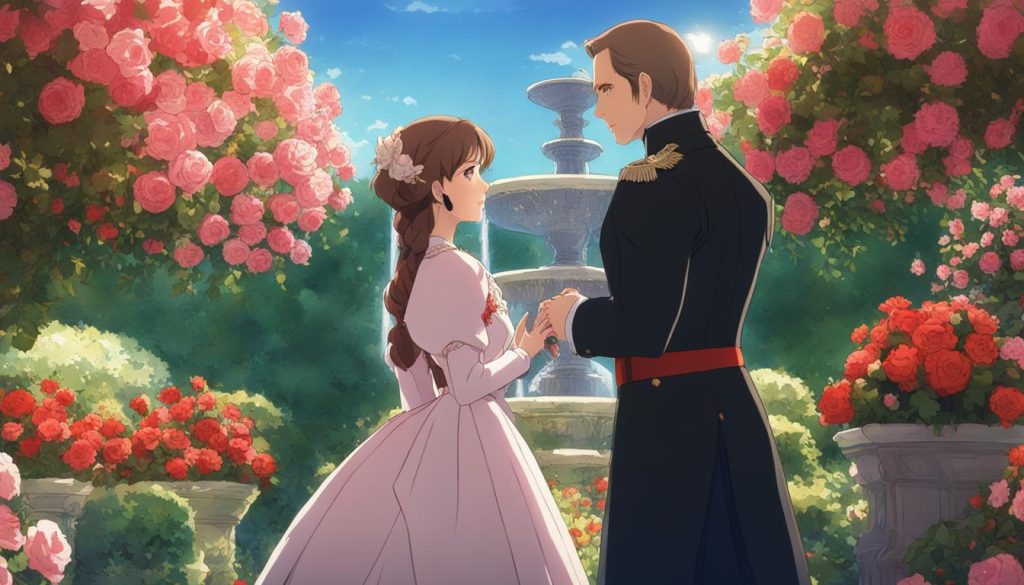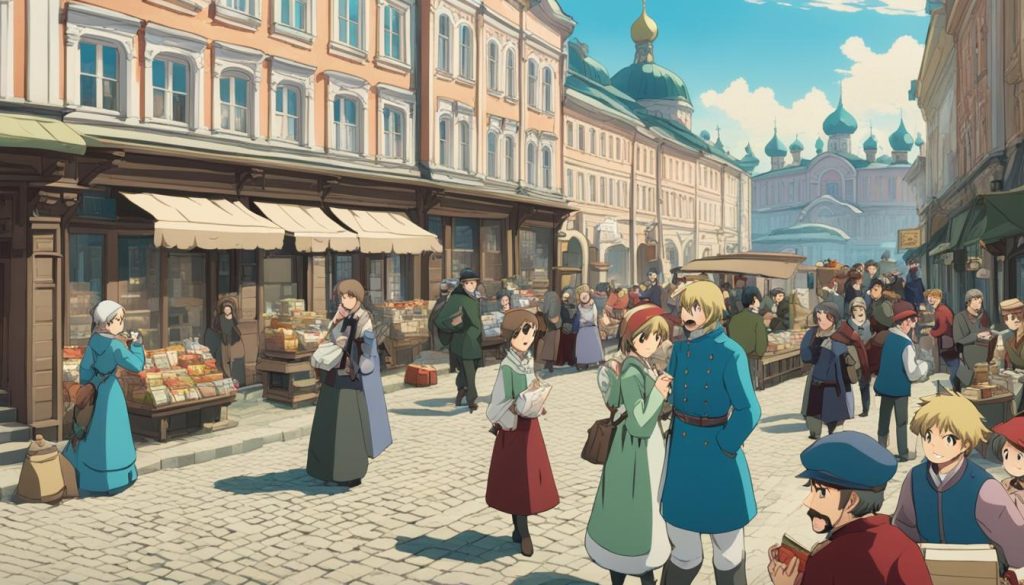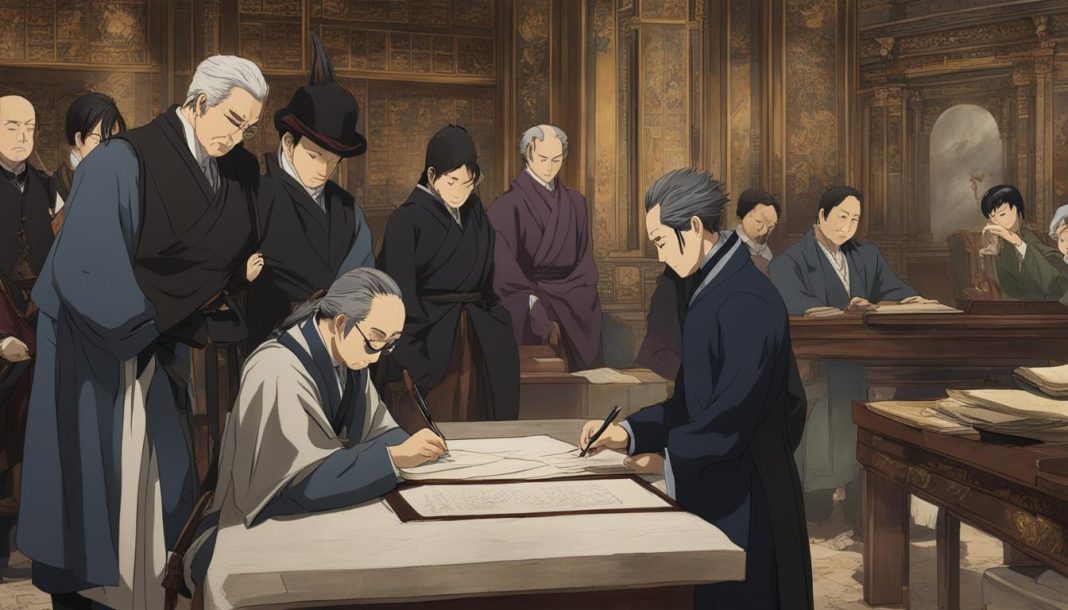Alexander II: The Reformer Tsar’s Legacy Story

Once upon a time in 19th century Russia, there was a powerful ruler named Alexander II. This Russian Tsar, known as the “Tsar Liberator,” left an indelible mark on Russian history with his ambitious reforms and emancipation policies. His reign was a pivotal period of transformation, as he sought to modernize and propel Russia into the future.
Picture a vast and sprawling empire, still rooted in feudalism and struggling to catch up with the advances of Western Europe. It was a time of social inequality, with the majority of the population living as serfs, bound to the land and subject to the whims of their noble landlords. But Alexander II envisioned a different future for his nation, one based on freedom, equality, and progress.
In 1861, Alexander II issued the Emancipation Edict, a bold and groundbreaking move that abolished serfdom and granted millions of serfs their freedom. This monumental act, known as the Great Reforms, aimed to uplift the impoverished masses and build a more just and prosperous society.
However, not everyone welcomed these reforms with open arms. The nobility, reluctant to release their grip on power and privilege, resisted the changes. Additionally, radical revolutionary movements began to emerge, seeking even more sweeping reforms and radical transformation of the entire system.
Alexander II was not deterred by opposition. He embarked on ambitious initiatives to modernize various aspects of Russian society. He reformed the judicial system, introducing more fairness and transparency. He established elected local assemblies called zemstvos, giving people a voice in their communities. He even focused on military organization, aiming to create a stronger and more efficient armed forces.
As Alexander II pushed forward with his reform agenda, he also navigated a complex foreign policy landscape. He supported the Union during the American Civil War, safeguarding Russia’s interests and preventing the potential acquisition of Alaska by Britain. He forged alliances with Germany and Austria in the League of the Three Emperors, fostering peace and stability.
But amidst the progress and achievements, there were challenges and controversies. Alexander II faced an assassination attempt in 1866, which led him to adopt more conservative policies and crack down on political prisoners and secret societies. His personal life, including a scandalous affair with Catherine Dolgorukova, further strained his authority and influenced his decisions.
Despite his efforts and accomplishments, Alexander II’s reign ultimately met a tragic end. On March 13, 1881, he was assassinated in a bomb attack carried out by the revolutionary terrorist organization, Narodnaya Volya. His assassination marked a turning point in Russian history, as it set the stage for further turmoil and the eventual downfall of the Romanov dynasty.
Key Takeaways:
- Alexander II was a Russian Tsar who implemented significant reforms and an emancipation policy, known as the Great Reforms.
- He aimed to modernize Russian society and address social inequality through measures such as the abolition of serfdom.
- Despite facing opposition and radical revolutionary movements, Alexander II pushed forward with his reform agenda.
- He pursued a pacifist foreign policy and held alliances to ensure the stability of the empire.
- However, challenges and controversies, including assassination attempts and personal scandals, shaped his reign.
Early Life and Accession to the Throne
Alexander II, the future Tsar of Russia, was born in Moscow in 1818. He was the eldest son of Nicholas I and Charlotte of Prussia, and his mother played a significant role in his upbringing, shaping his moral and intellectual development.
Following the death of his father in 1855, Alexander ascended to the Russian throne as Tsesarevich. Despite being exposed to liberal ideas during his education, he maintained a commitment to autocracy throughout his reign, following in the footsteps of his predecessor, Nicholas I, who was known for his strong, autocratic rule.
Throughout his life, Alexander II faced numerous challenges and made critical decisions that shaped the course of Russian history. His early life and accession to the throne laid the foundation for the transformative reforms and policies he would later implement.
“I have only one project: the good of Russia, to which I am ready to sacrifice my life.” – Alexander II
The Crimean War and Treaty of Paris
The beginning of Alexander II’s reign was marred by the devastating Crimean War, which shed light on Russia’s backwardness in comparison to its European counterparts. The war resulted in significant losses for Russia and highlighted the urgent need for modernization and reform.
In 1856, Alexander II made the decision to sign the Treaty of Paris, marking the end of the Crimean War. However, this treaty came at a great cost to Russia. As part of the agreement, Russia was forced to give up its Black Sea Fleet, depriving the country of a crucial military asset.
The Treaty of Paris also established a demilitarized zone in the Black Sea, restricting Russia’s ability to maintain a military presence in the region. This demilitarized zone aimed to ensure the security and stability of neighboring countries and prevent future conflicts.
Despite these setbacks, the Treaty of Paris did provide Alexander II with the opportunity to shift his focus towards domestic reforms and modernization efforts within Russia.
The Crimean War revealed the urgent need for Russia to catch up with the rest of Europe in terms of military technology and modernization. The Treaty of Paris, although costly, allowed Alexander II to redirect his attention to important internal reforms.
Great Reforms
Alexander II, the reform-minded Russian Tsar, embarked on a series of transformative measures aimed at modernizing various aspects of Russian society. These reforms, collectively known as the Great Reforms, sought to bring about significant changes in the country’s political, social, and economic structure.
One of the most significant reforms introduced by Alexander II was the emancipation of the serfs in 1861. This reform abolished serfdom, granting personal freedoms to millions of peasants who were previously bound to the land and their landlords. The emancipation was a crucial step towards reducing class privilege and fostering social equality.
In addition to the emancipation of the serfs, Alexander II initiated reforms in the judicial system to enhance fairness and impartiality. The aim was to establish a more transparent and efficient legal framework that would protect the rights of all individuals and promote the rule of law.
Another crucial aspect of the Great Reforms was the creation of elected local government assemblies called zemstvos. These assemblies were responsible for local administration and played a significant role in improving healthcare, education, and infrastructure at the regional level.
Recognizing the need for a more modern and effective military, Alexander II implemented reforms to improve the military organization of the country. These changes included the introduction of conscription, the modernization of weaponry and tactics, and the establishment of military schools to train officers.
Overall, Alexander II’s Great Reforms aimed to reduce class disparities, promote humanitarian progress, and stimulate economic development. Through these reforms, he sought to modernize Russian institutions and lay the foundation for a more prosperous and equitable society.
The image above illustrates the significant impact of Alexander II’s reforms on Russian society. The alt attribute contains the keyword “Great Reforms” related to this section, emphasizing the relevance of the image to the content.
Foreign Policy
Alexander II’s foreign policy was characterized by a commitment to pacifism and the pursuit of peace and stability in international affairs. During the American Civil War, Alexander II voiced support for the Union, aligning Russia with the cause of abolishing slavery in the United States. This stance reflected his own significant domestic reforms, including the emancipation of the serfs.
In a strategic move to prevent the potential acquisition of Alaska by Britain, Alexander II sold the territory to the United States in 1867. This decision not only secured Alaska’s future but also bolstered Russia’s influence in North America. It was a testament to Alexander II’s foresight and diplomatic acumen.
Seeking to maintain peace and stability within Europe, Alexander II entered into the League of the Three Emperors with Germany and Austria. This alliance aimed to counterbalance potential threats and prevent conflicts that could destabilize the region. By joining forces with these European powers, Alexander II demonstrated his commitment to preserving international harmony.
However, Alexander II’s foreign policy was not entirely without conflict. In 1877-78, Russia engaged in a brief war with the Ottoman Empire. This conflict, known as the Russo-Turkish War, resulted in the expansion of Russian territories in the Far East and Caucasus. While Alexander II sought to protect Russian interests and extend influence in these regions, the war highlighted the complexities and challenges of foreign policy.
Reaction and Terrorism
Following an assassination attempt in 1866, Alexander II became more conservative in his policies. He implemented repressive measures, including cracking down on political prisoners and secret societies.
“The sequel follows the appearance, not entirely unexpected, of secret societes called Terrorists, originally organized in Siberia by political prisoners.”
This crackdown on political dissent further solidified Alexander’s shift towards conservatism and a tightening grip on power. One of the most notable acts of terrorism during his reign was Dmitry Karakozov’s attempt on the emperor’s life.
“The spark that ignited the fire of revolution was the 1866 attempt on Alexander II’s life by Dmitry Karakozov, a young idealist with radical beliefs.”
As a result, Alexander II’s reaction to terrorism had significant implications for the future of Russian politics and society.
Personal Life and Controversies
Alexander II’s personal life was not without its share of controversies. He was involved in a highly publicized liaison with Catherine Dolgorukova, which strained his authority both within his family and society.
This affair caused significant turmoil, as Catherine Dolgorukova was not of noble birth, and her relationship with the Tsar was seen as scandalous. This liaison contributed to increasing tensions within the court and further weakened Alexander’s hold on power.
Additionally, the influence of Pan-Slav nationalists played a role in Alexander II’s personal life and political decisions. The Pan-Slavists aimed to promote the unity of all Slavic people and achieve independence from foreign powers. Their ideology resonated with Alexander, and he felt a sense of guilt for not doing enough to support their cause.
This guilt, combined with the pressure from Pan-Slav nationalists and other political factions, spurred Alexander’s involvement in the Russo-Turkish War of 1877-78. Despite his efforts to maintain peace with neighboring nations, the war resulted in both territorial gains and losses for Russia.
“The personal dilemmas Alexander II faced, particularly his controversial liaison with Catherine Dolgorukova, had a significant impact on his decision-making and ultimately shaped his political choices during his reign.” – Russian historian
Despite the controversies surrounding his personal life, Alexander II’s reign continued to be marked by his commitment to modernization and reform in other areas of Russian society.
Legacy and Assassination
Alexander II’s reign left a complex legacy in Russian history. While his rule witnessed significant reforms and modernization, it also set the stage for revolutionary movements that would eventually lead to the downfall of the Romanov dynasty. Alexander II’s legacy is a reflection of the challenges he faced in his pursuit of progress and stability.
On March 13, 1881, Alexander II’s life came to a tragic end. He was assassinated in a bomb attack carried out by the terrorist organization Narodnaya Volya. This shocking act highlighted the growing tensions within Russian society and the widespread opposition to the autocratic rule.
“The assassination of Alexander II was a turning point in Russian history, fueling the revolutionary movement that would soon bring about sweeping changes in the country.” – Historian Ivan Ivanovich
The assassination of Alexander II marked a significant milestone in the revolutionary movement. It further galvanized the discontent among the population and intensified the fight for political change. The seeds sown by Alexander II’s reforms had now grown into a full-blown revolution, ultimately leading to the fall of the Romanov dynasty and the rise of a new era in Russian history.
“The assassination of Alexander II was a final blow to the autocratic regime. It exemplified the power of revolutionary fervor and laid the groundwork for the transformational events that followed.” – Political analyst Maria Petrovna
Impact on Russian Society
Alexander II’s reforms had a profound impact on Russian society. The emancipation of the serfs freed millions of individuals and brought about a significant shift in the social structure. According to Alexander II, “The liberation of the serfs was not only a moral necessity, but also a vital economic measure.” This bold move marked a turning point in Russian history, allowing former serfs to pursue new opportunities and contribute to the country’s development.
Furthermore, Alexander II’s judicial reform aimed to create a fair and accessible legal system for all. The establishment of trial by jury and the introduction of public trials emphasized transparency and the protection of individual rights. Through these reforms, Alexander II sought to foster a sense of justice and equality within Russian society.
In addition, local self-government institutions known as zemstvos were created to empower local communities. These institutions allowed citizens to actively participate in decision-making processes and address local concerns. They contributed to advancements in education, healthcare, and local administration, bringing about positive changes in the daily lives of the Russian people.
This image provides a visual representation of Alexander II’s impact on Russian society:

Modernization and Expansion
Alexander II’s reign witnessed extensive modernization and expansion, laying the foundation for Russia’s future imperial aspirations. Economic development was stimulated through the improvement of transportation networks, with a particular focus on the railway system. The modernization of infrastructure not only facilitated internal trade but also connected remote regions, promoting economic growth and integration.
“The railway is the main artery of modernization and progress. It connects our vast territories, promotes trade, and brings people closer together.” – Alexander II
With an eye towards territorial acquisitions, Alexander II embarked on a series of strategic expansion campaigns. Russia acquired territories in Asia, expanding its influence and securing valuable resources. The expansion also extended Russia’s foothold in the Caucasus, solidifying its control in the region and furthering its imperial ambitions.
Economic Development and Territorial Acquisitions
The development of the railway system played a pivotal role in driving economic growth. It facilitated the transport of goods, raw materials, and people, fostering trade and stimulating industrialization. The increased mobility and connectivity brought by the railways contributed significantly to Russia’s economic development during this time.
The territorial acquisitions under Alexander II’s reign expanded Russia’s presence in Central Asia, seeking to secure buffer zones and extend influence. These acquisitions not only strengthened the empire but also laid the groundwork for future expansion and geopolitical power in the region.
With modernization, economic development, and territorial acquisitions, Alexander II’s reign set the stage for Russia’s transformation into a global power in the years to come.
Conclusion
Alexander II’s reign in 19th century Russia was characterized by significant reform and modernization efforts. As the Tsar, Alexander II embarked on a series of initiatives aimed at addressing the country’s backwardness and promoting Western ideas and practices. These policies, known as the Great Reforms, encompassed various aspects of Russian society, including the emancipation of the serfs, judicial system reform, local self-government, and improvements in the military organization.
However, despite his noble intentions, Alexander II’s reign also had unintended consequences. The reforms inadvertently laid the groundwork for revolutionary movements that ultimately led to the downfall of the Romanov dynasty. His assassination in 1881 marked the end of an era and ushered in a turbulent period in Russian history.
Nevertheless, Alexander II’s legacy cannot be ignored. His reformist policies had a profound impact on Russian society, opening up opportunities for social mobility and advancements in education, healthcare, and local administration. His focus on modernization and expansion also paved the way for Russia’s future imperial aspirations.
Thanks For Reading…Alexander II: The Reformer Tsar’s Legacy
How much did you like Alexander II: The Reformer Tsar’s Legacy? Please share your views in the comment box. Also, please share this story with your friends on social media so they can enjoy it, and for more such stories, please bookmark storiespub.com.
Check out other stories that we have:
























